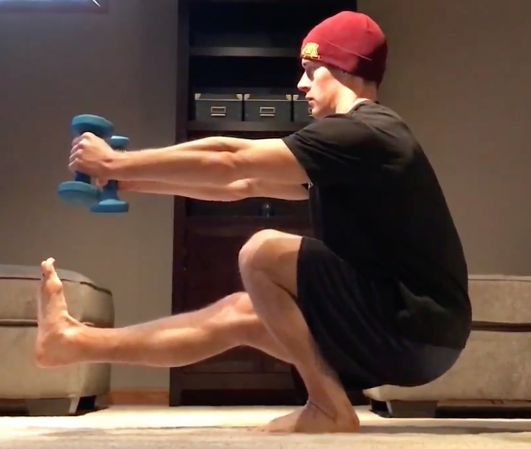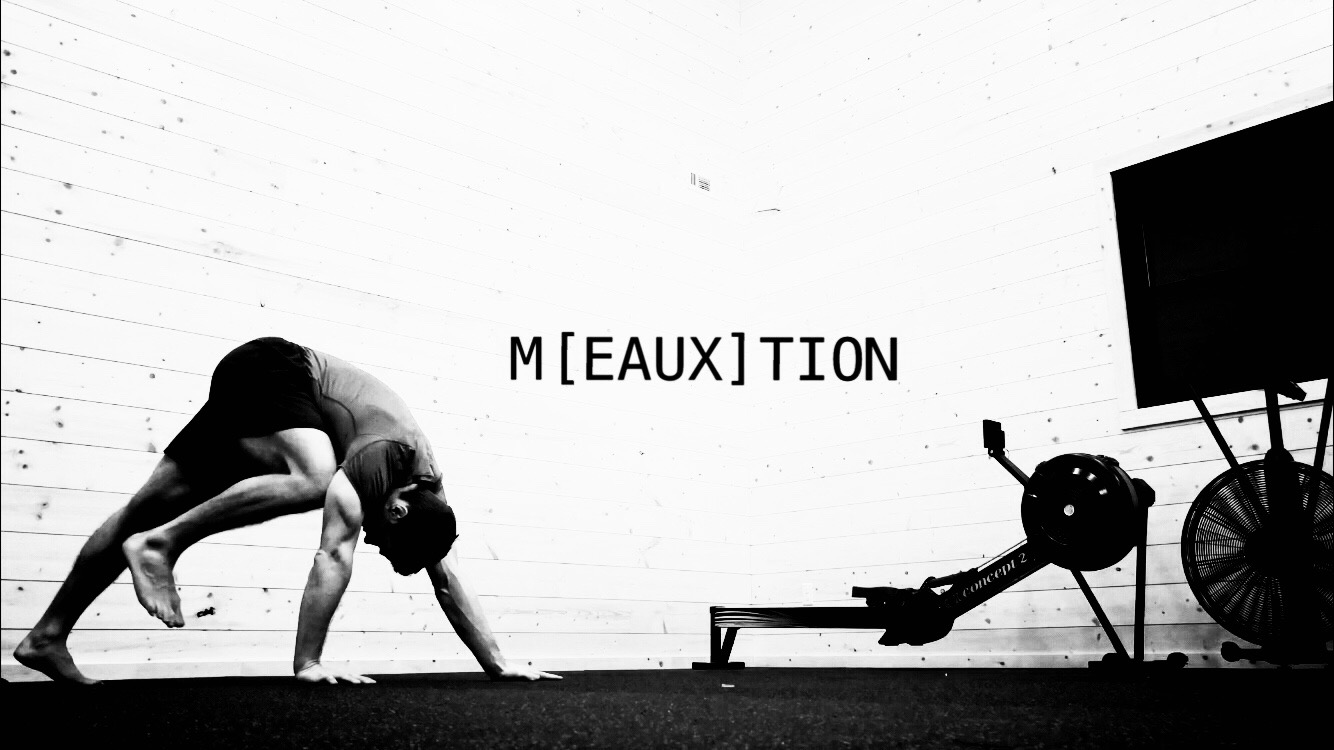
Pew, pew, pew… pistol squats.
There are few exercises that accomplish more for functional lower body performance than single leg squats, aka “pistol squats’. They’ve been referred to as the “king of lower body strength training”, and I cannot disagree.
Here are some key benefits of pistol squat training:
- Improve single leg performance (strength, balance, stability, etc)
- Challenge movement complexity beyond regular squats
- Training body control and coordination
- Low reps, high reward
- Mind/body focus
- Assessment for movement deficits (strength, balance, flexibility, etc)
- Portable strength (you can do them anywhere)
I’ll expand on each of these benefits in a separate article. For now, the takeaway is pistol squats are a potent lower body performance enhancer, connect the mind and body to a greater degree, progress body control and coordination, and you can practice them anywhere.
Symmetry
Building symmetrical strength, balance, and coordination between the right and left sides of the body provides immediate and noticeable benefits to performance in daily life and sport. Bilateral squats are not bad, but they can mask deficits and encourage compensations. Your body is extremely good at finding a way to complete exercises by any means necessary, even if the movement is full of compensations.
For a lot of people, one of the great payoffs in practicing physical fitness is that one moment when you realize a physical task was executed that wasn’t previously possible. Surprisingly yourself physically is rewarding.
“Oh, I can do that now”.
Unknowingly, many daily tasks are performed on one leg. Improving one’s ability to perform on one leg makes doing anything on two legs that much more efficient.
Personally, increasing my focus on improving pistol squat performance has saved my lower-back, and served as a door opener to more advanced movement flows.
More so, single leg training brought to light my own right/left performance deficits. I won’t say I became a better person once I cleaned up my asymmetries, but my performance saw improvement and nagging irritations went away.
If you find yourself unable to mirror a range of motion, or lift a similar amount of weight on one side of the body but not the other, it’s worth investigating why these differences exist.
It could be because of favoritism. Right/left side favoritism is common. I have it, you have it, we all have it. Repetitively completing tasks using the same arm or leg can slowly create imbalances, which may or may not manifest into acute or chronic issues down the road.
Examples: Stepping up or down a ladder with the same leg, using the same arm for heavy lifting or carrying, slinging the work bag over the same shoulder, driving with the same hand on the steering wheel tilted to the same side.
I’m not saying audit your entire life and become a hypochondriac with these things, just be aware favoritism exists.
Though it is important to practice traditional bilateral squats (2-legs), single leg training, even if only using one’s body weight, addresses gaps left unfilled by regular squats.
Balancing on one leg requires hip stabilizers to wake up and participate. This is a positive for those who sit for long periods throughout the day.
Leverage Exercise Progression
For a beginner, a full round of pistol squats may seem unachievable, and only for the “fit”. This is bullshit.
The “fit” didn’t enter this world sporting six-packs while ripping out pistol squats, just as the wealthy (typically) haven’t always been wealthy. The simple truth is your body isn’t acclimated to the mechanics of the pistol squats yet. Leveraging proper exercise progression and dedicated practice, a full pistol squat is a lot closer than you’d think.
If you’re unable to execute a pistol squat, the simple truth is that your body isn’t acclimated to do so. It’s a sign you may be lacking strength, flexibility or coordination, all of which can be improved quickly through proper exercise progression and practice.
You’re a lot closer to doing pistol squats than you think.
With proper progression and some tenacity for achievement, the human body adapts to be strength and new patterns quickly.
The power of progression is why I continue to demonstrate progression roadmaps leading to these “big bang for your buck” exercises.
All 3 of the following exercise progressions can be used regardless if you’ve been squatting with two-legs or using supported single leg squat variations. Though these exercises are a nice stepping stone, they are not necessary if the exercise is regressed back far enough to be manageable.
Variation #1: Suspension Trainer Assisted Pistol Squats
Use the suspension trainer to guide your body into and out of the squat. Grip the handles with intent and use the arms to lessen the intensity as needed. Slowly ask your legs to do more work as you gain strength.
3-5 sets of 5-8 reps per leg
Variation #2: Pinch Grip Assisted Pistol Squats
This pistol squat progression is demonstrated using a squat rack, but a door frame will work just as well. Grip the rack or doorframe with your fingertips, lower into the squat and back up, assisting as needed. Slowly soften the grip as you become more efficient. Move to a 2 or 3 finger pinch grip to increase the challenge.
3-5 sets of 5-8 reps per leg
Variation #3: Dowel Assisted Pistol Squats
The dowel acts as unstable assistance in this progression. This unstable assistance provides an introduction to a training effect similar to an unassisted pistol squat. Maintaining balance throughout the range of motion will have the hip, knee, and core stabilizers working overtime.
Expect to feel soreness in the days from maintaining balance throughout the work set.
3 sets of 4-6 reps per leg
All three of these exercises should be used as progressions to a fully unsupported single leg pistol squat. Keep in mind that each exercise demonstrates a full range of motion.
Select a progression according to your current fitness level. Aim to graduate to the next most difficult progression as you gain strength and efficiency.
If this article was helpful, leave me a comment, or check out others like it.
Next steps? Get after it.
Cheers,
Kyle

